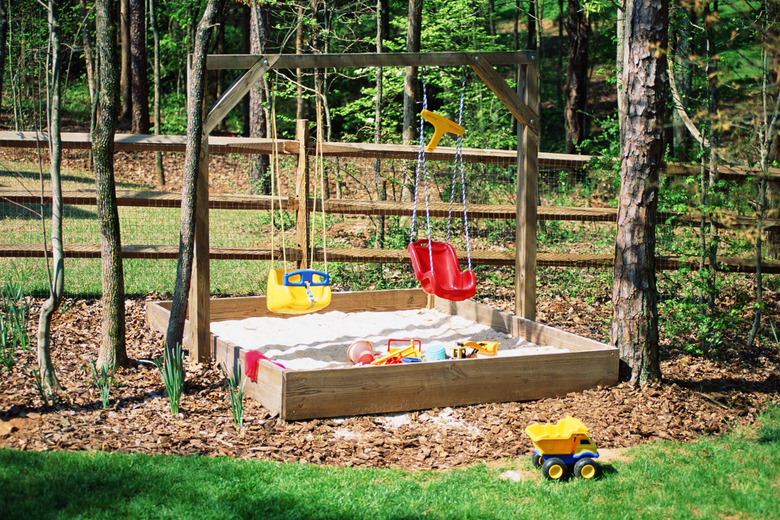Dangerous Mold In Sandboxes
Parents often mistakenly believe that if they keep their child's sandbox covered when not in use, it will remain a safe environment for a child. Despite sanitary measures, Rhizopus stolonifer mold can grow and flourish in a sandbox. A common black mold, Rhizopus stolonifer can cause a respiratory reaction if inhaled or result in serious illness if ingested. It can prove fatal in people who suffer from any type of immunosuppression.
Appearance
Rhizopus stolonifer commonly occurs in or on soil, animal feces, bird feces, bird nests and fruit. Rhizopus stolonifer is often referred to as bread mold because it occurs often on the surface of bread. The mold appears green and black when it first begins growth. Soon it takes on a furry gray appearance with block dots throughout. Under a microscope, the mold appears to be comprised of a multitude of threads that are entwined. People often notice the mold in garbage cans, sandboxes and refrigerators.
Reproduction
Mold in sandboxes usually occurs during warm, dry weather. Rhizopus stolonifer becomes the most prolific and produces the greatest amount of reproduction spores when temperatures range from 59 to 86 degrees Fahrenheit. When the mold is disturbed, it sends out reproduction spores. The reproduction spores become airborne and spread rapidly. In ideal weather conditions, the mold usually takes only two to three days to produce reproduction spores and spread.
Monitoring
Mold serves a valuable purpose in the environment. Rhizopus stolonifer in the soil helps break down fruit and other organic material that contains sugar and starches. In a child's sandbox, however, the mold poses a serious health risk and should be immediately addressed. If mold is detected in a sandbox, the parent should keep the child away from it until it has been safely eliminated. Monitor the sandbox daily for any signs of mold.
Maintenance
Parents should purchase only sanitized commercial sand that is clearly labeled for a sandbox. Keeping a lid on the sandbox, when not in use, will help to keep bird and animal feces out of the sand. Animal and bird feces can spread mold spores. Parents should replace the play sand with new sand every two years. If the sand shows signs of mold, parents should replace the sand and clean the sandbox thoroughly to remove all signs of mold. Bleach and water will adequately remove the mold from within the sandbox. Once the mold has been removed from the sandbox's surface, the parent can fill it with sanitized sand.
